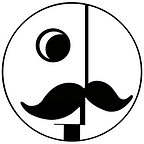Motorcycles of Africa - Chad
As mentioned in my previous photo essay on motorcycles in Uganda, I regularly find myself spending long stretches of time watching African scenery roll past the windows of a loaded minibus.
Just a month after my October 2019 trip to Uganda I was back on the road in Africa, this time in Chad. I was still getting to know the camera on my Pixel phone, so once again I filled my travel time with snapshots of passing motorcycles while we drove through the variegated landscape of the Sahel.
With a smaller population and a weaker economy, motorcycles are far less common in Chad than in Uganda, but they are still an ever-present part of the scenery. The selection of bikes is quite different, however. The ubiquitous Indian-made Bajaj Boxers I saw in Uganda are virtually nonexistent here. Instead, there are a handful of Hondas and an endless array of obscure Chinese Honda-clones.
Chinese manufacturers ship more than 125 different brands of affordable motorcycles to Africa each year, most of them entirely unknown of outside of the Continent. Some are even custom brands specifically manufactured for high-profile motorcycle dealerships. “Carter” was the most common motorcycle brand I saw in Chad, and it’s the store brand for a motorcycle dealership of the same name in Lagos, Nigeria, a 2–3 day drive from here.
Most of the motorcycles in Chad can be traced back to Togo, a tiny country on the West African coast sandwiched between Benin and Ghana. Millions of unassembled motorcycles flow from China into the port city of Lome, where they are assembled and sold across sub-Saharan Africa.
By shipping the motorcycles to Africa piecemeal and assembling them onsite in Togo, Chinese manufacturers reduce tariff obligations. They also earn Togolese government favor by employing thousands of locals in the specialized motorcycle assembly plants. Togo’s proximity to Nigeria, Ghana and Côte d’Ivoire enables easy market access to three of the biggest economies in West Africa.
Those bustling coastal economies are far from where I am, however. While many other African countries are struggling with overwhelming motorcycle and motor-scooter traffic, N’Djamena is far more placid.
A brand new bike sells for less than $500 in the big cities of coastal West Africa, but many of the bikes here seem to be far from new. Between the dust, the inconsistent fuel quality, and the heavy loads that the motorcycles are subject to, this is not an environment that is friendly to bikes.
The bikes are mostly 125cc or smaller, as the Togolese government taxes larger engines more heavily. I was initially skeptical of their quality and durability, but the Chinese manufacturers appear to have earned their place in the motorcycle market by making bikes that are solid enough to compete with the Honda CG125 — the gold standard for bulletproof motorcycle utility (also Chinese-made these days).
I didn’t go as far afield as I would have liked on this trip, and there was less traffic to photograph, so I didn’t really get nearly as many great photos as I have on past excursions. Nonetheless, some striking memories remain.
Stay tuned for more street scenes from Africa as I sort through several more years worth of accumulated photos from the field.
